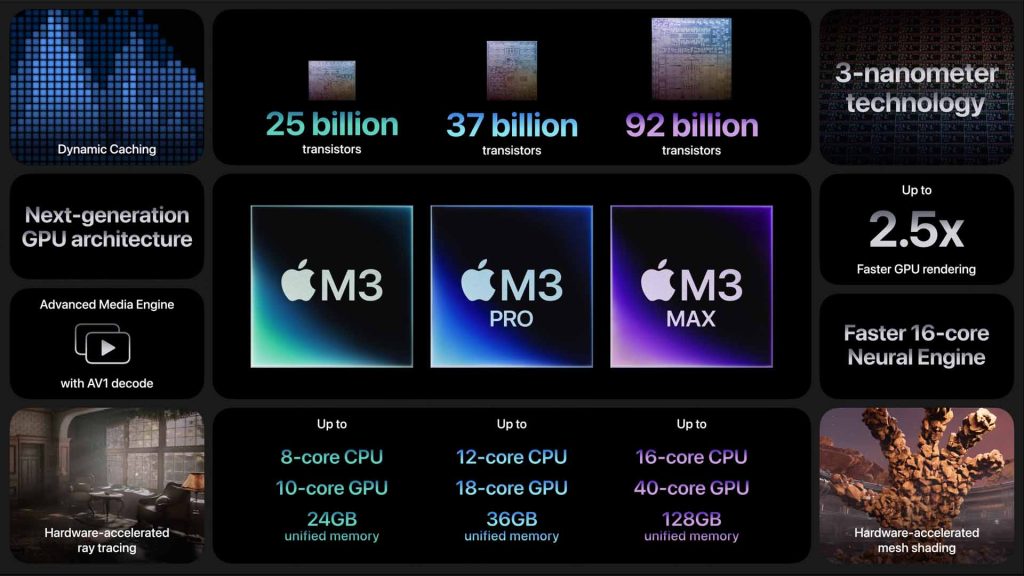I configured the most expensive MacBook Pro M3 with 8TB of storage, 128GB of unified memory, and all available options, and I couldn’t believe the price.
The Touch Bar was ahead of its time, a phenomenon that occurs occasionally. We eventually reach a stage where we can technologically realize a genuinely innovative concept, but it still falls short of being practical for widespread adoption. Consider 3D TVs or augmented reality headsets as examples. The Touch Bar, which is no longer included in any Macs sold by Apple, falls into this category. It was a genuinely cool idea, executed quite effectively, yet it never garnered widespread acceptance, with only diehard enthusiasts like us appreciating its merits.
M3 MacBook Pro with top-of-the-line specifications?
When the Touch Bar was introduced, it felt like a glimpse into the future. It featured an OLED strip that responded to touch and replaced the traditional function row of keys on the 2016 MacBook Pro. With it, users could effortlessly navigate through video and audio files in QuickTime. In Safari, they had the option to select aesthetically pleasing bookmark buttons. Preview also boasted a variety of handy buttons. The Touch Bar itself comprised a stunning collection of buttons that adapted based on the current context, resembling the contextual menus found in iOS, but brought to life in the physical realm.
The issue was that the Touch Bar never fully transitioned from the proof-of-concept stage, even though it was incorporated into the majority of MacBook Pros produced from late 2016 to 2019. If it was intended to replace the entire function row, which included convenient physical mute and volume buttons, it had to offer more than just a proof of concept. It needed to provide genuine value.
iMac 2024: Unchanged Design, Retaining the Same Color
It’s quite noticeable, but with the 2021 model, one of the primary highlights, aside from the new processor, was the extensive range of color choices. In the earlier years, iMacs were known for their colorful designs, but in recent times, the default look has been the distinctive all-silver design. The 2021 edition introduced a variety of colors including green, yellow, orange, pink, purple, blue, and, for those who preferred it, silver. Many other companies have also expanded their color options, reflecting the trend of more vibrant iPhone styles.
The 2024 iMac is clearly embracing this choice, although the colorful options may not feel as novel this time. You can once again purchase the new 24-inch model in blue, purple, green, yellow, orange, red, and silver.

As in the previous instance, not every color is accessible with each configuration. The base $1,299 model is exclusively offered in green, pink, blue, and silver. Yellow, orange, and purple, on the other hand, are exclusively available for the upgraded GPU model (more details on the components below), in addition to the aforementioned base colors. Apple also unveiled new color-coordinated desktop wallpapers to align with your style, along with correspondingly coordinated accessories such as a keyboard, mouse, and trackpad.
The iMac’s design has consistently revolved around a super-slim, all-in-one display, and that remains unchanged. Both the prior model and the latest iteration maintain a thickness of 0.45 inches, indicating that Apple is neither slimming it down further nor adding any additional bulk.
While this might seem obvious, it’s not always the case, particularly when incorporating more potent internal components. Some manufacturers might opt for a slightly thicker build to achieve enhanced performance. Apple asserts that its in-house silicon is what enables the added power to operate efficiently within such a slim chassis.
So, if you were anticipating an even slimmer design, that’s not happening this time. In practical terms, making it even thinner would likely entail performance compromises, especially for a machine that doesn’t need to be portable. All in all, this year’s model shares more similarities with the previous edition than the 2021 model did with the 2020 Apple iMac.
The Same 24-inch 4.5K Display, Along with Updated Features
The absence of a design overhaul isn’t necessarily a drawback. The iMac remains an attractive, vibrant, and sleek device. However, this time, a significant visual redesign isn’t a prominent aspect of the equation. In the previous iteration, the iMac underwent a substantial 50% reduction in total volume compared to its predecessor.
The display technology remains unchanged as well. The 2021 24-inch iMac boasted a resolution of 4,480 by 2,520 pixels, which is slightly higher than 4K and referred to as “4.5K” by Apple. This same panel is still being used, so there’s no need to anticipate a more advanced or sharper display. The display consists of 11.3 million pixels, offers support for the P3 wide color gamut, and achieves a rated brightness of 500 nits.
These are crucially important specifications for creative professionals, so I can understand some disappointment that the iMac didn’t receive newer, cutting-edge panel upgrades. Much like its slim design, however, this choice seems entirely logical for this desktop’s intended purpose. At this screen size, an even higher resolution isn’t necessary, and media workloads are unlikely to surpass 4K for this machine; 8K specialist machines and monitors may be required for more demanding tasks.
You will discover a couple of smaller new features despite the familiar appearance, primarily under the hood in the form of Wi-Fi 6E for faster internet speeds and Bluetooth 5.3. Additionally, it includes up to four USB Type-C ports (two of which support Thunderbolt 4). Similar to the previous iMac, the base model has only two Thunderbolt 4 ports, while the more expensive configuration offers two additional USB3 (Type-C) connections. Of course, the high-quality 1080p camera has made a return.
The latest macOS software, Sonoma, is naturally an upgrade over the launch OS, Big Sur, of the previous iMac. The new iMac has been designed with a focus on reducing its environmental impact. The stand is constructed using 100% recycled aluminum, other recycled metals are used on the interior, and the circuit board features fully recycled gold plating.
Architecture, Components, and Configurations: M3 Is the Real Upgrade As mentioned earlier, the new M3 chips are the true stars of Apple’s revamped iMac. Across the new iMac and MacBook Pro models, all three chips on this platform (M3, M3 Pro, and M3 Max) promise significantly improved performance. This is especially noticeable for the iMac, which has skipped the M2 platform altogether.
It’s possible that a larger iMac size down the road will utilize the M3 Pro and M3 Max chips, or they may be reserved for updates to the Mac Pro or Mac mini. It was only recently that the Mac Pro adopted the highest-end M2 chip, so the introduction of M3 chips may be some time away. With the iMac skipping the M2 and launching only in a 24-inch size, it’s challenging to predict precisely where Apple will position the product line.
In every aspect, this is an excellent machine except for its RAM capacity. If you’re aware that 8GB of RAM won’t suffice for your needs, consider spending an additional $200 to upgrade to 16GB. With this enhancement, the M3 MacBook Pro truly transforms into the ideal laptop.
The next-generation CPU in the M3 series introduces architectural enhancements to both performance and efficiency cores. Compared to the M1 series, the performance cores are now up to 30 percent faster, as indicated by Apple.






